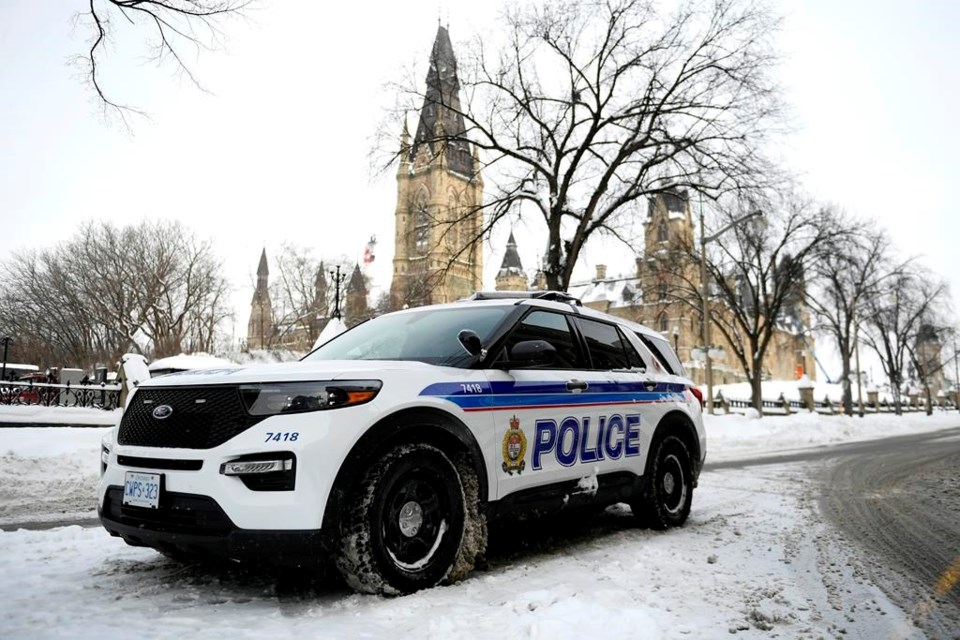Ottawa police are facing criticism after officers wore the "thin blue line" symbol on their jerseys at a charity hockey game over the weekend.
Photos from the friendly Friday night game between the Ottawa Police Service and the Ottawa Fire Service have been circulating online, with many commenters panning the choice of uniform.
The Ottawa Police Association is standing by officers' decision to wear the symbol, which some view as a sign of police solidarity and others see as a rebuke of the racial justice movement. But city Coun. Ariel Troster is calling it "unacceptable," and says its use must be outlawed.
In Canada, the "thin blue line" symbol, often worn as a patch, generally looks like a blue line cutting horizontally across a black-and-white version of the Canadian flag.
Many police forces across the country have banned members from wearing it while on duty because of its adoption in recent years by groups on the far right. The RCMP directed officers to stop wearing it in 2020, and it has been banned for Ottawa police since February 2021.
A spokesperson for Ottawa police noted the ban and said jerseys for the hockey game were provided by the Ottawa Police Association. The spokesperson did not otherwise condone or condemn officers' decision to wear them, but said that "community feedback" on the use of the symbol has been the subject of discussion between the service, the association and the city's Police Services Board.
The association continues to fly a flag featuring the symbol at its building in downtown Ottawa, despite a request from the board to take it down.
Association president Matthew Cox defended the use of the symbol, saying it is a way to honour officers who have died on the job. He said the flag will "probably" continue to be flown.
Cox said the association needs to do a better job at educating the public about what the symbol means to the police community.
"This has nothing to do with being an extremist or a racist," he said.
"Those jerseys actually came long before BLM turned the thin blue line logo into being, as they're saying, an extremist symbol."
Cox was alluding to the Black Lives Matter movement and the Blue Lives Matter countermovement. When protests highlighting police violence against Black people swept across the United States beginning in 2014, the "thin blue line" was adopted as a symbol by counter-protesters, including members of white supremacist groups.
Troster said the symbol is creating division at a time when Ottawa police are supposed to be rebuilding trust with the community. Standing by its use runs counter to that goal, she said.
"It's racialized members of our community that get to say that the thin blue line symbol is unacceptable," said Troster.
"If the police really want to build bridges with the community, they need to stop displaying it. Full stop."
Troster said she plans to renew the request that the police association stop flying the "thin blue line" flag, in addition to removing it from the hockey jerseys.
In a statement, Police Association of Ontario president Mark Baxter argued that the symbol, which he said was originally created to honour those who have fallen in the line of duty, has a "special meaning" to the profession as a whole.
"As can happen, this emblem has sometimes unfortunately become affiliated with other groups that do not represent the views of the (association)," the statement said.
"While we acknowledge that not all Ontarians perceive the emblem in the same way and we continue our ongoing efforts to build stronger community relations, it is a symbol that represents for a lot of our members the sacrifice of working every day to keep our communities safe."
This report by The Canadian Press was first published March 14, 2023.
———
This story was produced with the financial assistance of the Meta and Canadian Press News Fellowship.
Cindy Tran, The Canadian Press

